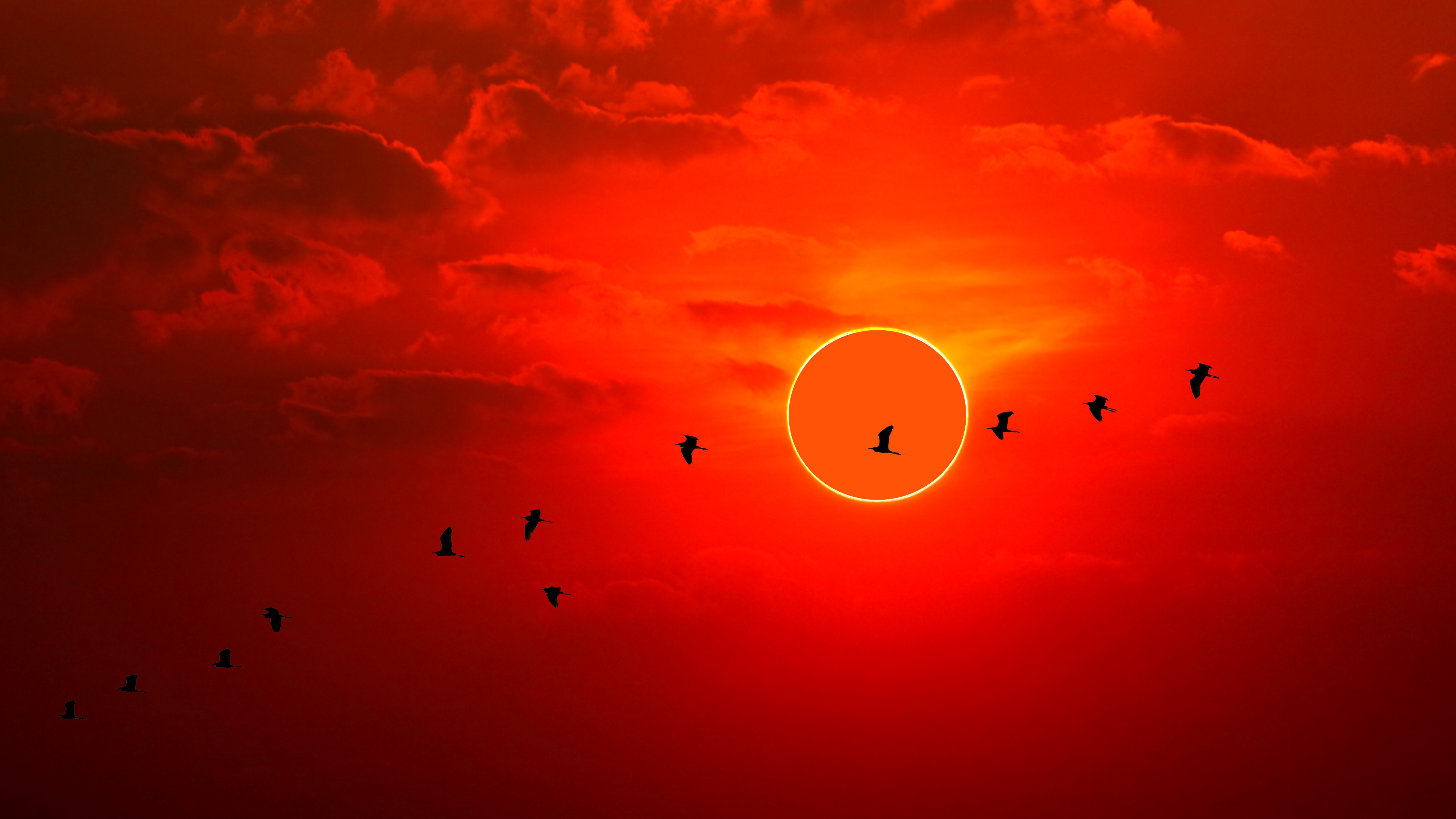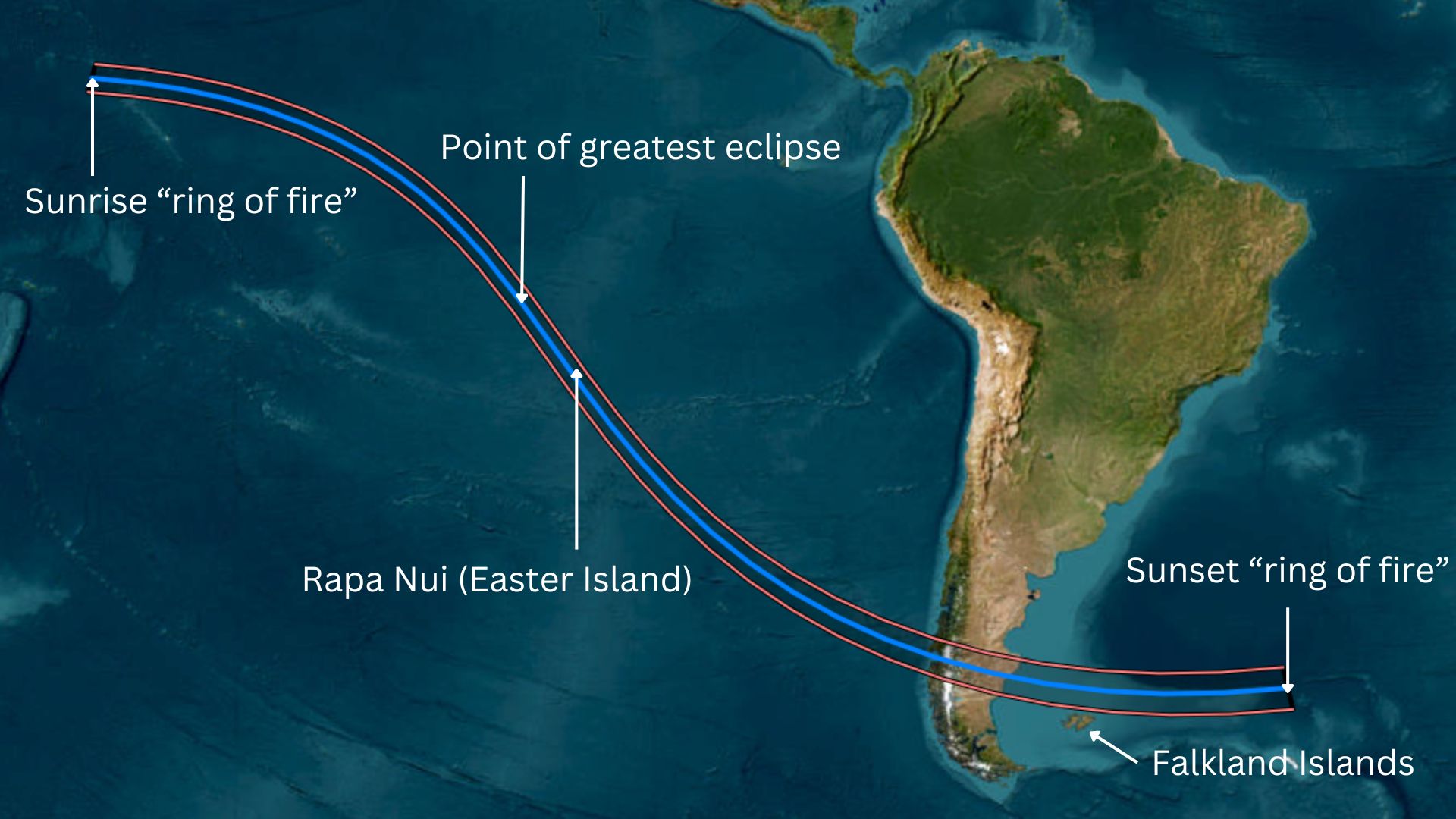
On Wednesday, Oct. 2, an annular solar eclipse will be visible over parts of the Pacific Ocean, southern Chile and southern Argentina.
Though the path of annularity — a 165 to 206-mile (265 to 331-kilometer) wide route where the moon will cover up to about 93% of the sun's disk — passes over a small portion of land, eager eclipse chasers unable to watch in person will be able to follow along here on Space.com's solar eclipse live blog and watch the action unfold via numerous livestreams. Details of which will be released closer to the time.
An annular solar eclipse occurs when the moon passes between the sun and Earth, casting a shadow on Earth. During an annular solar eclipse, the moon is slightly farther away from the sun compared to a total solar eclipse whereby it completely obscures the solar disk. Therefore the moon doesn't completely eclipse the sun but instead creates a spectacular "ring of fire."
REMEMBER to NEVER look directly at the sun. To view this solar eclipse safely you must use solar filters at all times. Whether your location will experience a partial solar eclipse or an annular solar eclipse, the dangers are the same. Observers will need to wear solar eclipse glasses, and cameras, telescopes and binoculars must have solar filters placed in front of their lenses at all times.
Our how to observe the sun safely guide tells you everything you need to know about safe solar observations.
Where can I see the annular solar eclipse?

Approximately 175,000 people live within the path of annularity, making this solar eclipse a rather remote affair. If you're unable to view the eclipse in person you can watch all the action unfold live here on Space.com with several livestreams (details of which will be released closer to the time).
Related: Solar eclipse 2024: Live updates
Notable locations where the solar eclipse is visible
For an in-depth look at the timings of each stage of the eclipse depending on your location, check out these resources on Time and Date.
- Rapa Nui/Easter Island, Chile (5 minutes, 38 seconds to 6 minutes, 12 seconds of annularity starting at 14:03 EAST, 67 degrees above North)
- Cochrane, Chile (5 minutes, 40 seconds of annularity starting at 17:21 CLST, 26 degrees above NNW)
- Perito Moreno National Park, Argentina (6 minutes, 17 seconds of annularity starting at 17:21 ART, 25 degrees above NNW)
- Puerto Deseado, Argentina (3 minutes, 22 seconds of annularity starting at 17:27 ART, 20 degrees above NNW)
- Puerto San Julian, Argentina (5 minutes, 12 seconds of annularity starting at 17:24 ART, 21 degrees above NNW)
For those outside the path of annularity a partial solar eclipse will be visible whereby the moon appears to take a "bite" out of the sun.
Here are some notable locations where a partial solar eclipse will be visible (along with the percentage coverage of the sun) on Oct. 2, 2024.
- Ushuaia, Argentina (72%)
- Falkland Islands (84%)
- Villarrica, Chile (63%)
- Punta Arenas, Chile (75%)
- Buenos Aires, Argentina (42%)
- São Paulo, Brazil (10%)







